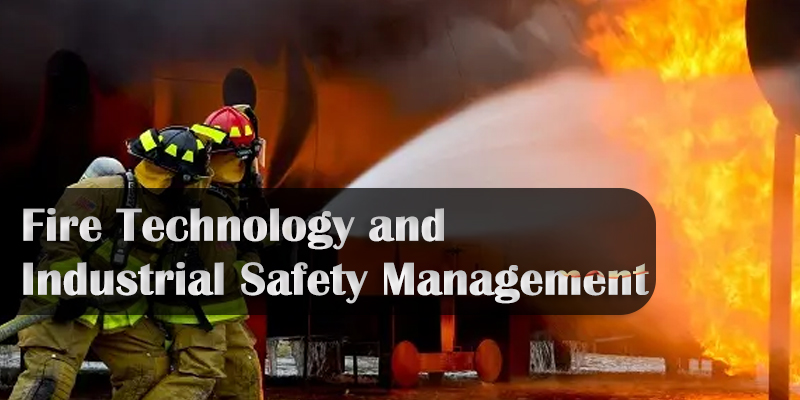
ITI Fire Technology and Industrial Safety Management Trade Syllabus
The ITI "Fire Technology and Industrial Safety Management" trade is a one-year vocational training program under the Craftsman Training Scheme (CTS), governed by the National Council for Vocational Training (NCVT). This course equips trainees with skills in fire prevention, firefighting techniques, industrial safety practices, and emergency response to ensure compliance with safety standards in industries. The syllabus integrates theoretical knowledge, practical firefighting and safety skills, and employability training to prepare students for roles such as fire technicians, safety officers, or inspectors in industrial settings, government sectors, or private safety firms.
Course Overview
- Duration: 1 year (2 semesters, each 6 months)
- NSQF Level: Level 4
- Eligibility: Minimum 10th grade pass with Science and Mathematics (or equivalent)
- Objective: To train individuals in fire technology, industrial safety management, and emergency response to meet industry and regulatory safety requirements.
Detailed Syllabus Breakdown
1. Trade Theory (Theoretical Knowledge)
Covers foundational concepts in fire technology and industrial safety.
- Semester 1
- Introduction to Fire Technology
- Definition and importance of fire technology.
- Types of fires: Class A, B, C, D, E, and their causes.
- Fire triangle and tetrahedron: fuel, oxygen, heat, chain reaction.
- Firefighting Equipment
- Types of extinguishers: water, foam, CO2, dry powder.
- Fire hoses, nozzles, hydrants, and pumps: operation and maintenance.
- Personal protective equipment (PPE): helmets, gloves, breathing apparatus.
- Fire Prevention and Control
- Sources of ignition: electrical, chemical, mechanical.
- Fire hazards in industries: flammable liquids, gases, dust.
- Fire prevention methods: housekeeping, storage, ventilation.
- Basic Industrial Safety
- Industrial hazards: mechanical, electrical, chemical, thermal.
- Safety signs and symbols: meaning and usage.
- First aid basics: burns, smoke inhalation, fractures.
- Safety Regulations
- Overview of fire safety laws: National Building Code, Factories Act.
- Role of safety audits and inspections.
- Personal and workplace safety: PPE usage, safe work practices.
- Introduction to Fire Technology
- Semester 2
- Advanced Firefighting Techniques
- Fire suppression systems: sprinklers, foam systems, gas-based systems.
- Evacuation procedures: planning, drills, and execution.
- Handling large-scale fires: industrial, structural, forest fires.
- Industrial Safety Management
- Risk assessment: identifying hazards, evaluating risks.
- Safety management systems: ISO 45001, OHSAS standards.
- Accident investigation: root cause analysis, reporting.
- Emergency Response
- Emergency planning: fire drills, evacuation routes, assembly points.
- Handling hazardous materials: spills, leaks, explosions.
- Coordination with fire services and rescue teams.
- Environmental Safety
- Impact of fires on the environment: smoke, chemical release.
- Waste management: disposal of firefighting residues.
- Pollution control measures during emergencies.
- Professional Skills
- Teamwork in emergency situations: roles and responsibilities.
- Communication during crises: reporting, instructions.
- Career opportunities: safety audits, firefighting services, consultancy.
- Advanced Firefighting Techniques
2. Trade Practical (Hands-On Skills)
Focuses on practical firefighting and safety management skills.
- Semester 1
- Firefighting Equipment Handling
- Operating fire extinguishers: CO2, foam, dry powder.
- Using fire hoses and hydrants: connecting, rolling, pressure testing.
- Wearing and testing PPE: breathing apparatus, fire suits.
- Firefighting Practice
- Extinguishing small fires: Class A, B, C scenarios.
- Conducting fire drills: evacuation and rescue simulation.
- Handling firefighting tools: ladders, axes, cutters.
- Safety Procedures
- Inspecting fire hazards in mock setups: electrical, chemical.
- Practicing first aid: bandaging, CPR, burn treatment.
- Using safety signs and equipment in workshops.
- Project Work
- Preparing a fire safety checklist for a small facility.
- Documenting equipment maintenance procedures.
- Firefighting Equipment Handling
- Semester 2
- Advanced Firefighting
- Operating fire suppression systems: sprinklers, foam applicators.
- Managing large-scale fire scenarios: industrial setups, mock buildings.
- Conducting evacuation drills with multiple participants.
- Safety Management
- Performing risk assessments in industrial environments.
- Investigating mock accidents: identifying causes, suggesting controls.
- Preparing safety audit reports for a workplace.
- Emergency Response
- Handling hazardous material spills: containment, cleanup.
- Coordinating mock emergency responses with teams.
- Practicing communication during crisis simulations.
- Project Work
- Designing an emergency response plan for an industrial unit.
- Presenting a fire safety awareness campaign.
- Advanced Firefighting
3. Workshop Calculation and Science
Provides mathematical and scientific support for fire technology tasks.
- Semester 1
- Arithmetic: calculating water pressure, extinguisher capacity.
- Physics: heat transfer, combustion principles, gas laws.
- Measurements: fire load, area coverage for sprinklers.
- Semester 2
- Calculations: evacuation time, risk probability.
- Chemistry: properties of flammable materials, extinguishing agents.
- Science: smoke behavior, ventilation effects in fires.
4. Engineering Drawing
Focuses on technical drawing for safety and firefighting setups.
- Semester 1: Sketching fire equipment layouts and safety signs.
- Semester 2: Preparing detailed evacuation plans and fire system diagrams.
5. Employability Skills
Enhances job readiness and soft skills.
- Semester 1
- Communication skills: reporting incidents, giving instructions.
- Time management: prioritizing tasks in emergencies.
- Basic IT skills: documenting safety reports.
- Semester 2
- Teamwork: collaborating in firefighting and safety drills.
- Entrepreneurship: starting a safety consultancy.
- Interview preparation: roles in fire and safety sectors.
Assessment and Certification
- Examinations: Conducted semester-wise with theoretical and practical components.
- Certification: Successful candidates receive the National Trade Certificate (NTC) from NCVT, recognized nationally and internationally.
- Evaluation: Based on firefighting skills, safety management, theoretical knowledge, and project work.
Career Opportunities
- Employment: Fire technician, safety officer, inspector in industries, fire departments, or construction firms.
- Self-Employment: Fire safety consultancy, training services.
- Further Studies: Diploma in Fire and Safety Engineering, Occupational Health and Safety.
Note
- This syllabus aligns with the latest NCVT guidelines and may vary slightly based on institutional or state-specific requirements.
- For the most current version, refer to the Directorate General of Training (DGT) website (dgt.gov.in) or consult your local ITI.
Trade Type
- 26 views